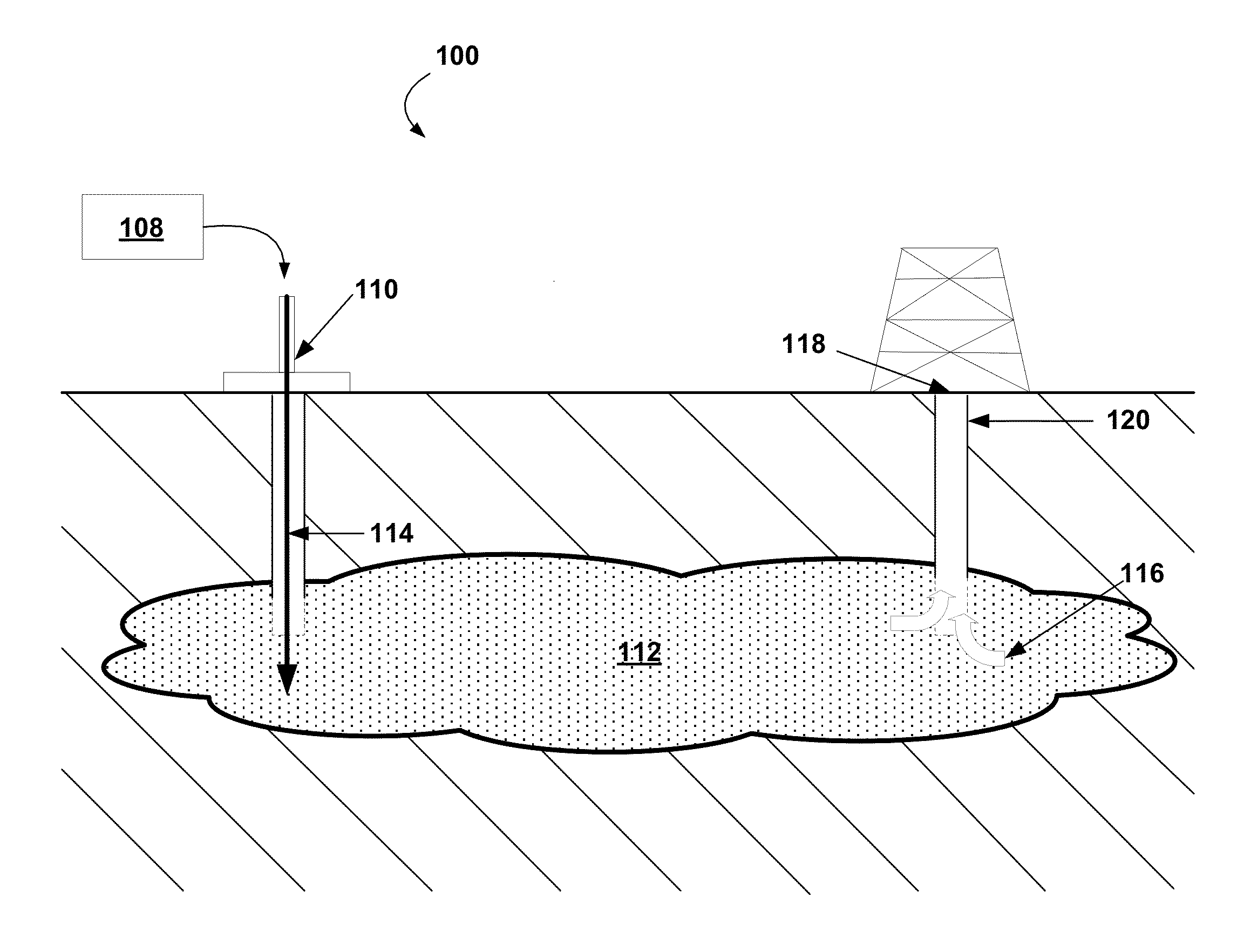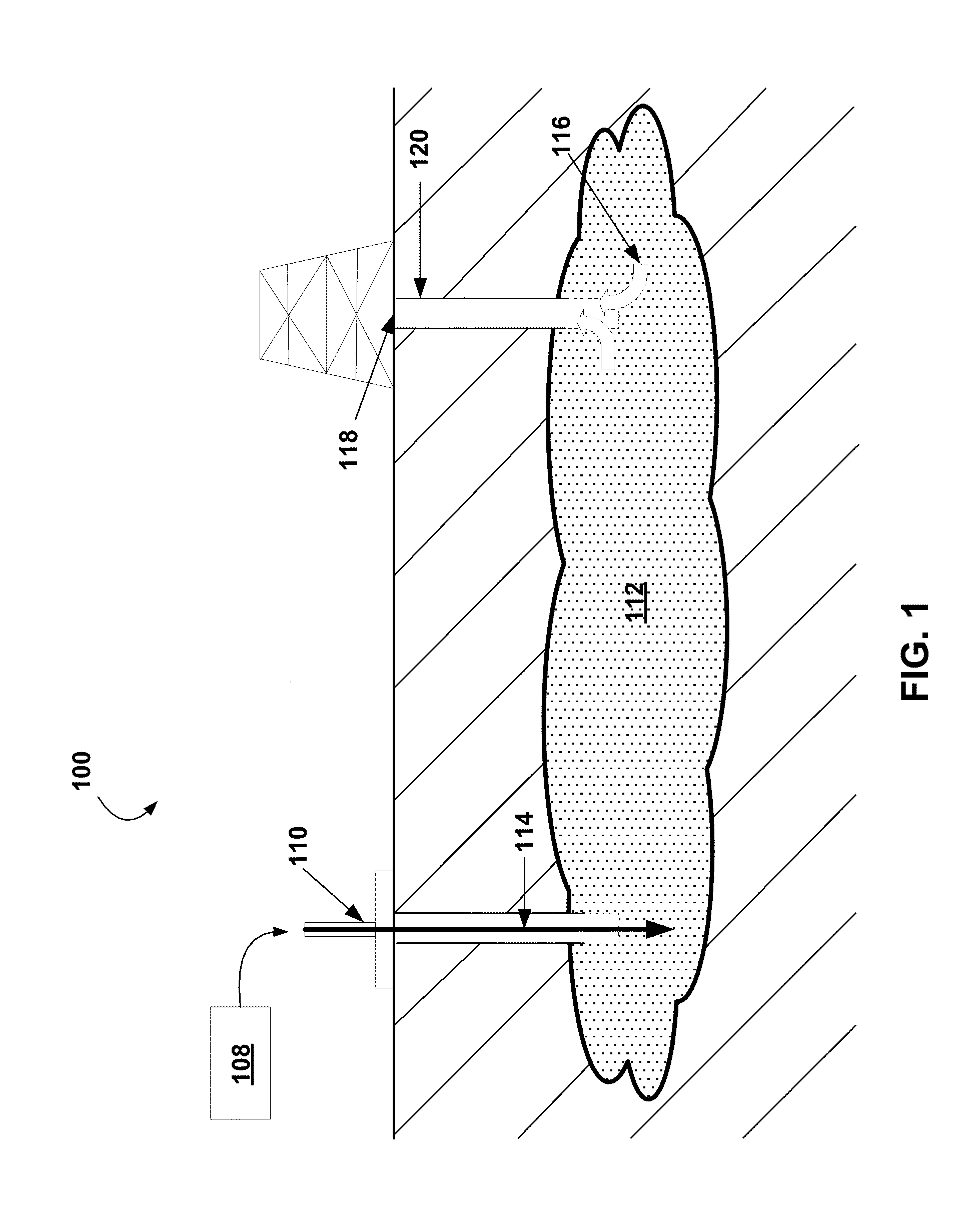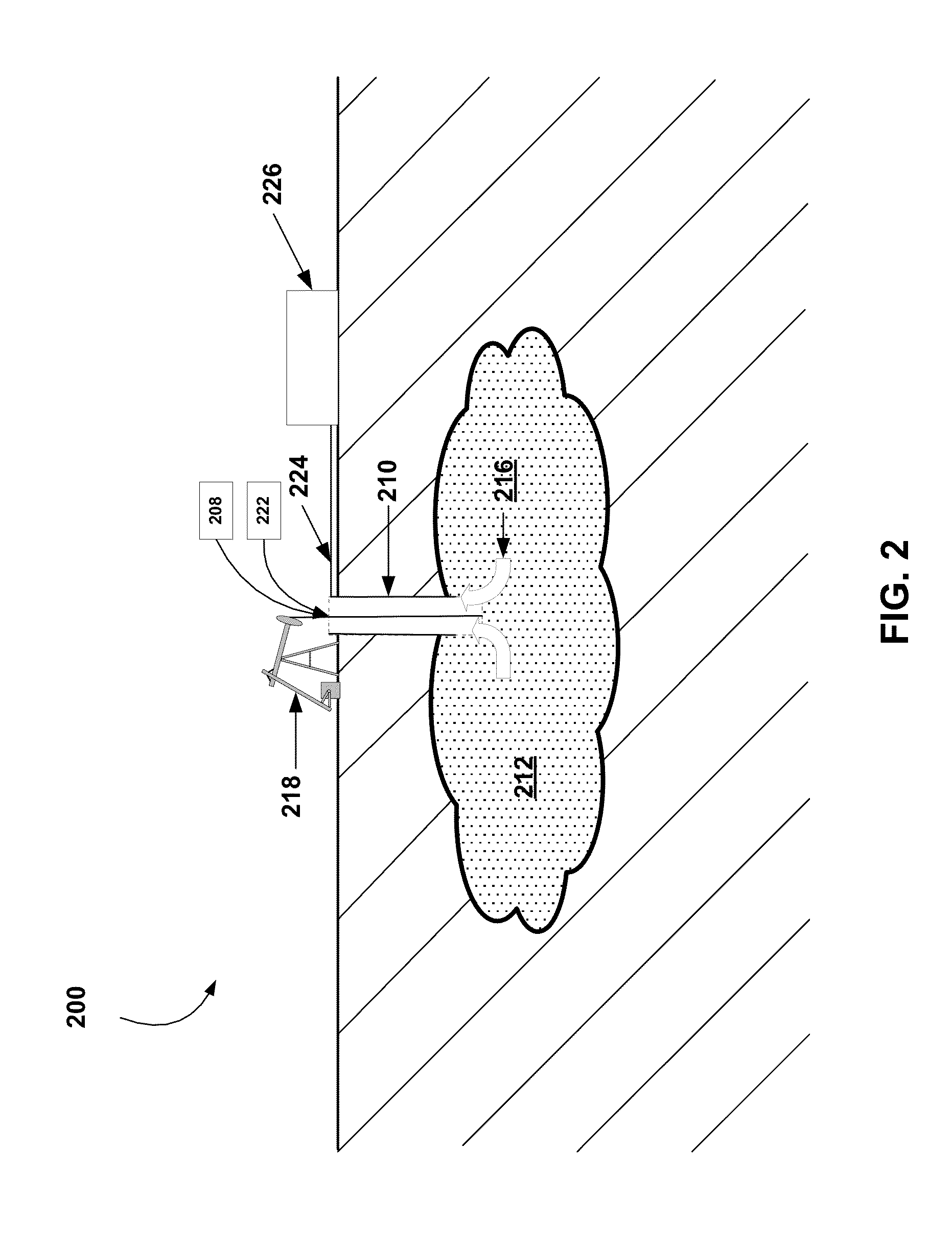Composition and method for recovering heavy oil
- Summary
- Abstract
- Description
- Claims
- Application Information
AI Technical Summary
Benefits of technology
Problems solved by technology
Method used
Image
Examples
example 1
[0090]Observation of Fluid Samples
[0091]Four 50 ml test samples were prepared using different combinations of oil produced in Ventura County, Calif. The solvent mixture was prepared according to the described chemical composition. There is no special or preferred method of mixing the chemicals. The alkane component contained primarily heptane isomers, along with a much small quantity of octane isomers. The ratio of heptane isomers to octane isomers was greater than 25:1 in percentage by weight representation in the final mixture. The mixture included trace quantities of six and nine carbon alkanes. Diethyl ether was chosen as the ether molecule in the solvent mixture. Toluene was selected as the aromatic hydrocarbon.
[0092]One sample consisted solely of the produced oil. The second sample consisted of a blend of 25% chemical composition and 75% oil by volume. Another sample consisted of a blend of 50% chemical composition and 50% oil. The final sample consisted of a blend of 75% chem...
examples 2 to 25
[0094]Viscosity and Density of Super Heavy Oil Subjected to Different Amounts of Chemical Composition and Differing Temperatures
[0095]The ability of the solvent mixture to effect changes to the viscosity and density of heavy oil samples is critical to its usefulness. Testing was undertaken to measure some of these changes.
[0096]Eight 50 ml samples were prepared, as per the methods illustrated in Example 1. The solvent mixture was the same as that described in Example 1. The specific gravity (API°) was determined for each sample. The density (g / ml) and viscosity (centistokes and centipoises) were determined at three temperatures: 60° C., 71.1° C., and 93.3° C.
[0097]The results are shown in Table 1.
TABLE 1Analysis of Viscosity and Density of Treated Super Heavy OilChemical CompositionOil GravityCrudeof Present Disclosureat 15.56° C.TemperatureDensityViscosityOil (%)(% vol)(API°)(° C.)(g / ml)CentisokesCentipoiseExample 210008.160.00.98552993429500Example 3100071.10.97861532815000Example...
examples 26 to 41
[0099]Viscosity and Density of Heavy Oil Subjected to Different Amounts of Chemical Composition and Differing Temperatures
[0100]Additional testing was performed to reconfirm the ability of the solvent mixture to qualitatively and quantitatively improve heavy oil's viscosity and specific gravity. Testing was done using the solvent mixture as described in the disclosure. The solvent mixture comprised heptane isomers. Diethyl ether and toluene served as the ether and aromatic hydrocarbons components to the chemical composition.
[0101]Four additional 50 ml samples were prepared, as per the methods described for Example 1. The mixtures were composed as follows: (1) 100% crude oil, (2) 80% crude oil, 20% solvent mixture, (3) 70% crude oil, 30% solvent mixture, and (4) 60% crude oil, 40% solvent mixture. The specific gravity (API°) of each prepared sample was determined. The viscosity was measured at three temperatures: 60° C., 71.1° C., and 93.3° C. The density was determined at four tempe...
PUM
 Login to View More
Login to View More Abstract
Description
Claims
Application Information
 Login to View More
Login to View More - R&D
- Intellectual Property
- Life Sciences
- Materials
- Tech Scout
- Unparalleled Data Quality
- Higher Quality Content
- 60% Fewer Hallucinations
Browse by: Latest US Patents, China's latest patents, Technical Efficacy Thesaurus, Application Domain, Technology Topic, Popular Technical Reports.
© 2025 PatSnap. All rights reserved.Legal|Privacy policy|Modern Slavery Act Transparency Statement|Sitemap|About US| Contact US: help@patsnap.com



